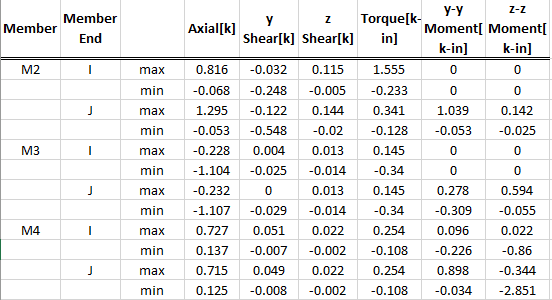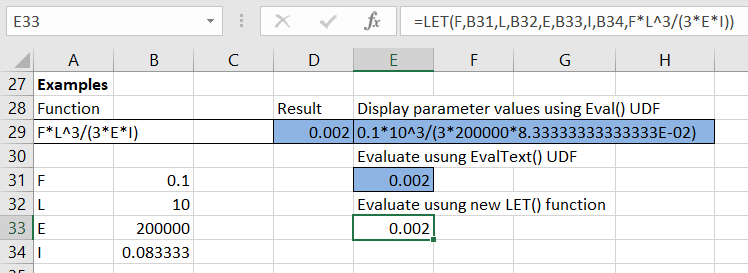MegaStructures
Structural
Hello:
I have a situation where I have a native list coming out of a structural analysis program that comes with one identifier for a block of values 8 columns wide and 4 rows tall. I would like to find a way to call the entire table from another sheet by looking for the single identifier. Example of the information is below.

Is there a way to do this with a native excel function? Is there a relatively easy way to do this with VBA or Python?
“Any idiot can build a bridge that stands, but it takes an engineer to build a bridge that barely stands.”
I have a situation where I have a native list coming out of a structural analysis program that comes with one identifier for a block of values 8 columns wide and 4 rows tall. I would like to find a way to call the entire table from another sheet by looking for the single identifier. Example of the information is below.

Is there a way to do this with a native excel function? Is there a relatively easy way to do this with VBA or Python?
“Any idiot can build a bridge that stands, but it takes an engineer to build a bridge that barely stands.”

![[glasses] [glasses] [glasses]](/data/assets/smilies/glasses.gif) Just traded in my OLD subtlety...
Just traded in my OLD subtlety...![[tongue] [tongue] [tongue]](/data/assets/smilies/tongue.gif)
